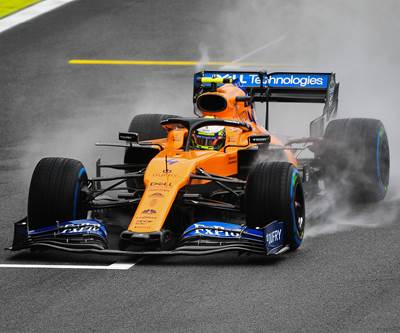GTR celebrates 20 years of composites service to Formula 1
GTR Composites’ highly bespoke composites services, from microcomponents to vehicle assemblies, have made it a key asset for premier F1 racing teams and suppliers, as well as adied the company’s diversification into other end markets.
Global Technologies Racing Ltd. (Arundel, U.K.) is celebrating 20 years of service to the Formula 1 (F1) car racing industry. As a provider of bespoke, high-performance composite design, development and manufacturing services, GTR Composites, a division of the Global Technologies Racing Group, has been continually relied upon by a significant selection of some of the world’s premier F1 racing teams and critical F1 suppliers.
GTR’s F1 business kicks into gear each year in December as the teams that engage their services reach the appropriate point in their new car design process and require composite components to be designed and manufactured. GTR then work closely and intensively with each client for a 4-month period to get everything in place for their “new car press launches.” This is then followed by the first test sessions, and eventually to assemble on the grid, fully prepared for the first race in March, each year.
GTR is unable to name individual clients nor detail specific customer components. However, for example, the span of its contribution to F1 is broad and has, in the past, included: the manufacture of chassis’ at the larger end of the component scale; a wide range of safety-critical components; and at the smaller end, the design and manufacture of complex and very precise assemblies, covering whatever the customers’ demands dictate.
Over the 20-year period, GTR has worked with more than 20 F1 teams and has achieved an annual turnover from F1 that amounts to £12 million for the 2023 season, to date. At any one race, GTR has estimated the average total number of GTR manufactured components present on the starting grid to be up to 400. Working with multiple competing teams means GTR has had to develop and maintain the strictest confidentiality and security processes. To protect the competitive intellectual property, different build teams across the business are completely unaware of what may be going on in the building next door. This inbuilt discretion is something that is attractive to other sensitive sector, such as defense and security.
GTR’s has a highly established high-precision composite manufacturing capability. As well as being selected to manufacture critical components for F1, GTR says it has been sought out by companies ranging from high technology supercar manufacturers to critical medical equipment manufacturers. Its skills, quality and attention to detail embedded into GTR’s processes are also an optimal match for precision sectors such as aerospace and defence.
With more than 250 highly skilled staff on site, GTR’s production facilities include 10 in-house autoclaves ranging in sizes up to 3 meters in diameter and 5.5 meters in length. This enables GTR to handle microcomponents and larger vehicle-sized assemblies such as the composite protected crew pods that GTR manufactured for the Foxhound armored military vehicle program.
“Wow! Twenty years of F1 business seems to have simply raced by (pardon the pun),” Simon Kingdon-Butcher, cofounder, owner and director at GTR, says. “We’re very proud indeed to have achieved this milestone and along the way, to have won and retained such prestigious customers as our F1 clients. We’ve continually developed our technology, practices and process over the years to keep us at the very front of development. Watching F1 races and knowing we’ve contributed to the ongoing success on a global stage is highly satisfying for all of us here at GTR.”
Kingdon-Butcher adds that though F1 has been very productive for the company, GTR has gradually diversified to other sectors where the company’s skills developed in F1 are equally as applicable. “Be it marine, aerospace, defence, automotive or medical, we can deliver the very best to meet the exacting standards of any client,” he concludes.
Read Next
McLaren celebrates 10 years of the McLaren P1 hybrid hypercar
Lightweight carbon fiber construction, Formula 1-inspired aerodynamics and high-performance hybrid powertrain technologies hallmark this hybrid vehicle, serve as a springboard for new race cars.
Read MoreThe untapped potential in Formula 1 composite manufacture
Formula 1’s midfield teams are struggling to bridge the gap to their better resourced frontrunning counterparts. Could Industry 4.0 composites manufacturing automation level the playing field?
Read More“Structured air” TPS safeguards composite structures
Powered by an 85% air/15% pure polyimide aerogel, Blueshift’s novel material system protects structures during transient thermal events from -200°C to beyond 2400°C for rockets, battery boxes and more.
Read More















.jpg;maxWidth=300;quality=90)







